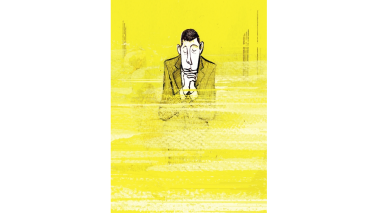Royal trainer Richard Hannon, we learn from an intriguing new volume about the Queen’s lifetime love affair with horse-racing, is essentially a stockman. He recognises horses by their shape and mannerisms rather than by what their owners choose to call them. So the chestnut colt with three white socks is, in Hannon-speak, ‘the Galileo colt’.
I know one other racing figure who does the same. One afternoon at Newbury Mrs Oakley and I were surprisingly and suddenly invited to take tea in the Royal Box and I was intrigued to find throughout a fascinating afternoon that Her Majesty never referred to the horses’ names in the racecard. For her, too, it was ‘the Sadler’s Wells colt’ or ‘the Storm Cat filly’ because, perhaps appropriately, it is playing chess with nature that is her primary racing focus. Author Julian Muscat calls her involvement with the turf ‘not so much a favoured pastime as a full-bodied embrace’. As he says, ‘Though she enjoys hearing tales of derring-do from jockeys whose skills she can relate to, she is most engaged when discussing bloodlines and breeding theories with others of like mind.’
Royal Ascot and Epsom Derby Day are ring-fenced in the Queen’s calendar. She adores seeing her home-breds grow up at every stage, often visiting them camera in hand like a proud parent on sports day. During Ascot weeks in younger days, she would be out riding in the morning with the foreign entrants as they exercised on the course. She is careful not to wear perfume that might excite the colts when she visits racing stables.
The first moment she fell in love with racing was when her father took her during the second world war to see Sun Chariot and Big Game, his two wartime substitute Classics winners. As she once told Sir Peter O’Sullevan, she had never before then felt the satiny smoothness of a thoroughbred and she put off washing her hands for hours.
The Queen won two fillies Classics herself with Dunfermline and took the Oaks in 1957 with Carrozza and the 1958 2000 Guineas with the 20–1 homebred Pall Mall. But in an age when the buying power has shifted to the Middle East and to the barons of Coolmore in Ireland, the Royal Studs have found it hard to compete at the highest level. Though she might have won the Oaks again with Flight of Fancy, who was injured in coming second in 2001, Her Majesty did not even have a Derby entrant between 1981 and 2011. We had all hoped that her quest for a Derby winner would succeed in 2011 with Carlton House, obtained in a swap with Sheikh Mohammed, but he did not quite deliver after losing a shoe.
When I first heard there was to be a book charting the royal passion for racing, I feared we might see a glossy coffee-table effort with nice pictures and a lot of fluff. Fortunately, the task was entrusted to Julian Muscat, one of the most perceptive and stylish writers about racing today, and the result — Her Majesty’s Pleasure: How Horseracing Enthrals the Queen (Racing Post, £20) — is a triumph. Yes, the pictures are splendid but what Julian has provided is not just a lively history of the horses the Queen has owned and of the ups and downs of the Royal studs (two top trainers had 19 of the Queen’s horses in 1960 and didn’t win her a single race) but also a vivid introduction to the whole fascinating world of international breeding, making sense of it in layman’s terms.
The anecdotes are splendid: talking to her trainer Ian Balding on the morning Margaret Thatcher was first elected prime minister, the Queen asked him what he thought. He replied, ‘Extraordinary, isn’t it, to think we are going to be governed by a woman.’ Unusually accompanying her on a visit to Balding’s yard, the Duke of Edinburgh commented that the horses looked very thin. ‘Did you but know,’ replied his spouse tartly, ‘that is how a fit racehorse should look.’ The down-to-earth Hannon, getting no sense out of a stable lad from India, asked Her Majesty, accompanying him in his 4×4, if she spoke Hindi. She didn’t, but his comment, ‘Well, you ought to, ma’am, you ruled the place for long enough,’ was accepted with a chuckle. The late Robin Cook, hardly an ardent royalist, established good relations as foreign secretary by passing the Queen the copy of the Racing Post he’d been reading on his flight to join her abroad.
One story not in the book I gleaned from a former Buckingham Palace press secretary who accompanied the Queen on a visit to Kentucky. His first effort at a press release for the occasion was headed ‘Queen to visit US Studs’. Reminded that we are two nations divided by a common language, he had hastily to redraft it to ‘Her Majesty to visit American breeding establishments’.





Comments